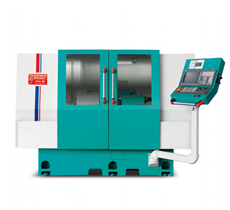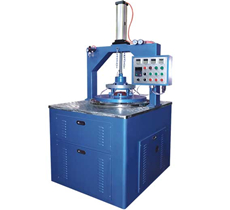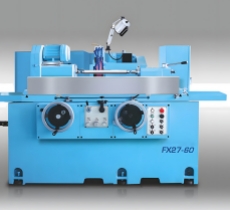Factors affecting surface roughness of grinding machine processing and its improvement measures:
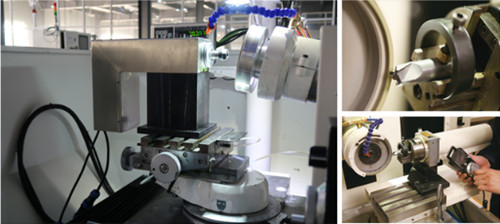
1. Factors related to the grinding wheel
Mainly grinding wheel particle size, hardness and dressing of the grinding wheel.
The finer the grain size of the grinding wheel, the more abrasive grains per unit area of the wheel, the finer the grinding surface scars, the smaller the surface roughness value. However, if the grain size is too fine, the grinding wheel is easy to be clogged, so that the surface roughness value increases, and at the same time, it is also easy to produce ripples and cause burns.
The hardness of the grinding wheel refers to the ease with which the abrasive grains can be dislodged from the wheel after being subjected to the grinding force. Grinding wheel is too hard, abrasive wear can not be dislodged, so that the surface of the workpiece is subjected to strong friction and extrusion, increased plastic deformation, surface roughness value increases, but also easy to cause burns; grinding wheel is too soft, abrasive grains are easy to dislodge, the grinding effect is weakened, but also increase the surface roughness value, so choose the appropriate grinding wheel hardness.
The dressing quality of the grinding wheel and the dressing tool used to dress the longitudinal feed of the grinding wheel has a close relationship. The dressing of the grinding wheel is to use diamond to remove the outer layer of the grinding wheel has been blunted abrasive grains, so that the cutting edge of the abrasive grains sharp, reduce the surface roughness value of the grinding surface. In addition, the smaller the longitudinal feed of the dressing wheel, the more cutting edges on the dressing wheel, the better the contour, thus obtaining a smaller surface roughness value.
2. Factors related to workpiece material
Including the hardness, plasticity, thermal conductivity of the material.
Workpiece material hardness, plasticity, thermal conductivity has a significant impact on the surface roughness. Aluminum, copper alloy and other soft materials are easy to block the grinding wheel, more difficult to grind. Plasticity, poor thermal conductivity of heat-resistant alloys are prone to early disintegration of the grit, resulting in an increase in the value of the grinding surface roughness.
3. Factors related to processing conditions
Including grinding dosage, cooling conditions and the precision and vibration resistance of the process system.
Grinding dosage has grinding wheel speed, workpiece speed, grinding depth and longitudinal feed. Increase the grinding wheel speed, it may make the surface metal plastic deformation propagation speed can not keep up with the grinding speed, the material is too late to deformation, so that the surface roughness value of the grinding surface to reduce show. Workpiece speed increases, plastic deformation increases, and the surface roughness value increases. The greater the grinding depth and longitudinal feed, the greater the plastic deformation, thus increasing the surface roughness value. The temperature is high during wheel grinding and the role of heat is dominant, so the role of cutting fluid is very important. The use of cutting fluid can reduce the temperature of the grinding zone, reduce burns, flush away the falling grit and chips to avoid scratching the workpiece, thus reducing the surface roughness value. However, it is necessary to choose the appropriate cooling method and cutting fluid.
In addition, for cylindrical grinding machine, internal grinding machine and surface grinding machine, the spindle accuracy of its machine tool grinding wheel, the accuracy and smoothness of the feed system, the rigidity of the entire machine tool and vibration resistance, etc., are closely related to the surface roughness.
Sharpening Techniques for Grinding Wheels
Sharpening is a process of sharpening the grits of a superabrasive grinding wheel. In this process, the bond between the abrasive grains and the dull abrasive grains are removed, so that the abrasive grains of the grinding wheel, which have strong grinding properties, protrude beyond the bond to form a sharp cutting edge. Sharpening must also be from the air holes on the surface of the grinding wheel, to remove the tiny material, to prevent the role of the grinding wheel on the grinding force increases, the grinding wheel on the grinding force increases, will cause vibration and cause surface burns on the parts.
Without proper sharpening, even the best grinding wheels are unlikely to achieve the high quality and dimensional consistency of machined parts. In fact, when you invest in high quality grinding wheels, it is important to dress them well in order to obtain high grinding performance.
Shaping can be considered part of wheel preparation, and it is done at the same time as sharpening regular grinding wheels. In the case of superabrasive grinding wheels, the two processes are carried out separately, with the wheels being shaped first. In grinding with superabrasives, shaping is done with a shaping tool or roller, and sharpening is often done with a ceramic-bonded dressing rod, which sharpens the wheel after shaping is complete.
It is important to ensure that the spindle bearings are at a certain temperature (e.g. in the usual wheel grinding condition) before the grinding wheel is dressed including shaping and sharpening. This avoids damage to the part geometry and abnormal wear of the grinding wheel and dressing tools. The dressing tool must be handled with care, as it is generally made of hard, wear-resistant but brittle diamond material and is very sensitive to small cracks and breakages caused by slight impacts and forces.
Since the diamond shaper is itself a knife, it needs to be kept very sharp. Using a dull dressing tool to dress the surface of a grinding wheel will dull the wheel. In order to maintain a high quality and sharp diamond dressing tool, it is necessary to rotate the single point or taper point dressing tool 1/8 turn at regular intervals. The number of rotations can be determined by the dressing situation, and as a rule of thumb, a minimum of one rotation per day. For chisel heads and molded dressing tools, it is generally necessary to rotate them 180° before they dull.
Most cylindrical grinders place the part and wheel on a horizontal line. The highest point of the outer circle of the part and the highest point of the outer circle of the grinding wheel is called the part/wheel contact point, and the diamond dressing tool should dress the wheel as close to the part/wheel contact point as possible. For internal grinding wheels, it is even more important to dress the diamond dressing tool close to the highest point of the wheel's outer circle (i.e., the part/wheel contact point when grinding holes).
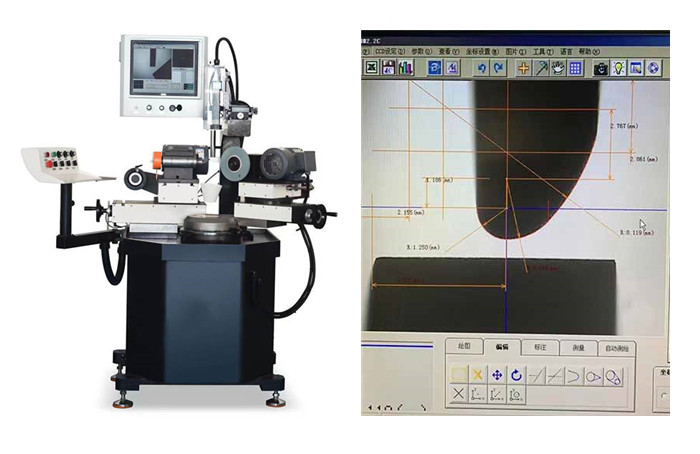
1. Adopting Fine Finishing
There always seems to be a temptation to choose a greater depth of trimming in order to minimize trimming time. This is a very bad idea. It is important to select the most appropriate dressing depth for the grinding wheel. Selecting too large a depth of removal generates high cutting temperatures, reduces dresser life, and removes useful layers of the wheel. The end result is damage to both the dresser and the wheel, which is counterproductive. The optimum amount of dressing is the amount that restores the geometry of the wheel and produces just the right amount of good grinding edge after a few removals. With a single-point dressing tool, the diameter of the wheel should be contacted in the direction of the diameter of the grinding wheel at an angle of inclination of 10-15o to the centerline of the axis. This will give the single point dressing tool a sharpening action as it periodically turns. Dressing tools that contact at multiple points do not need to be tilted at this angle. Instead, the entire end face of the dressing tool is used to contact the surface of the grinding wheel.
The transverse travel speed is the speed at which the dressing tool passes over the surface of the grinding wheel in dressing. It plays a key role in both the surface roughness and metal cutting rate required for the part being machined. Too slow a traverse speed will clog the grinding wheel, jeopardizing the surface finish and metal cutting rate of the part. Too slow a traverse speed can also cause wheel vibration and burn the surface of the part. Uniformly faster transverse speed can trim the surface of the grinding wheel, improve the grinding performance of the grinding wheel, increase the grinding efficiency and reduce the surface roughness of the parts.
2. Keep Cooling
Appropriate use of coolant can speed up the dressing speed and improve dressing efficiency. As a rule of thumb, a 3/8-inch diameter stream of coolant can remove a great deal of heat from the dresser and extend the life of the dresser. As the diamond dressing tool passes over the wheel, install a coolant nozzle that covers the entire surface of the wheel or continuously refill the diamond dressing tool with coolant. When the dressing tool is in contact with the grinding wheel to start dressing, never promise the dressing tool to exit from the coolant. Failure to do so will cause the diamond dressing tool to crack or rupture under extreme temperature changes from cold or heat.
High precision filtration of the coolant using a filter can avoid multiple cycles of dirt or chips in the coolant. Contaminated coolant can wear out grinding wheels very quickly and increase the number of dressing operations. Dry dressing of the grinding wheel is only carried out during dry grinding (only in this case the cooling of the diamond dressing tool can be interrupted). Let the grinding wheel idle for a few minutes after switching off the coolant before the daily release. This will prevent the grinding wheel from breaking.
3. Vibration During Dressing
In wheel dressing, it is vital to effectively minimize vibration to avoid dressing marks on the surface of the wheel, collisions and damage to dressing tools. This means that it is also necessary to keep the grinding wheel balanced, which is determined by the structural characteristics of the wheel itself. Uneven densities and good or bad geometry throughout the grinding wheel can affect the inherent balance of a wheel. Therefore, it is also important to choose a high-quality grinding wheel. If the wheel is of high quality, it only needs to be properly mounted to keep the wheel well balanced. According to the wheel manufacturer's instructions, the wheel is marked with an upward arrow, which indicates the orientation of the light end of the wheel after rough balancing. The user can then follow the arrow and keep an eye on the grinding wheel to bring it into dynamic balance. Evenly dosed coolant can sometimes help to keep the wheel balanced.
In order to further avoid vibration, it is necessary to ensure that the dressing tool is securely clamped to the clamping base and maintain a minimum amount of overhang to ensure that the dressing tool has sufficient rigidity. If the diamond tool is not securely clamped, it can cause vibration, generate noise, create ripples on the surface of the part, strain the surface of the part and damage the dressing tool.
A superabrasive grit wheel must be shaped and sharpened before grinding can begin. Following the lessons presented in this article will help your grinding wheels produce the most short-tailed grinding results.
The influence of grinding machine accuracy on processing of workpieces
The geometric accuracy, stiffness, thermal deformation, motion stability and vibration resistance of the grinding machine will have a direct impact on the machining accuracy of the workpiece.
1. Geometric accuracy of grinding machine
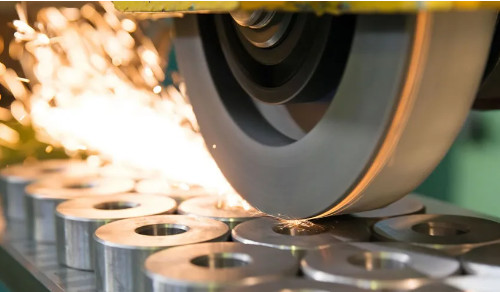
It refers to the accuracy of movement and mutual position of each part without bearing load. It is impossible to make a machine tool absolutely precise, and there is always an unavoidable amount of error. This error will be reflected in the workpiece processing to different degrees to the workpiece up, and affect the accuracy of its workpiece processing. Generally have the spindle radial runout and axial runout, table and other moving parts moving straightness, working parts of the mutual position error and transmission error.
Wheel spindle radial runout and axial runout and grinding machine headstock movement error, not only affects the surface roughness of the workpiece after grinding, but also make the workpiece to produce roundness and endface runout, resulting in uneven sparks in the grinding process. When the table moves in the vertical plane is not perpendicular, it affects the straightness of the workpiece's busbar in the internal and external cylindrical grinder, and grinds the plane in the surface grinder, resulting in a large error in the flatness of the workpiece. The centerline of the grinding wheel spindle axis of the external grinding machine and the centerline of the grinding wheel spindle axis of the internal grinding machine are not equal to the centerline of the headstock axis of the workpiece, and the workpiece busbar is hyperbolic when grinding internal and external cones. The centerline of the grinding wheel spindle axis is not parallel to the table moving direction, which affects the straightness of the end face of the workpiece after grinding. The transmission error of the grinding machine has a great influence on the processing accuracy of thread grinding and gear grinding.
2. Stiffness of grinding machine
It refers to the ability of its components to resist deformation when the grinder is subjected to external force (grinding force). That is, under the same grinding force, the smaller the deformation of the parts, the greater the stiffness. Conversely, a large deformation of a component means that the component is less stiff. The size of these deformations, destroying the original geometric accuracy of the grinding machine static, will cause the size of the machining error of the workpiece. So the machine tool with good stiffness has high machining accuracy of the workpiece.
3. Thermal deformation
The heat source inside the grinder is not uniformly distributed, and the amount of heat generated by each part in the movement is also different, and the influence of external heat source on each part of the machine tool is also different, and the coefficients of thermal expansion of the parts due to the different materials are also different, resulting in different trace deformation of each part of the machine tool, so that the original geometric accuracy of the machine tool decreases, and affects the machining accuracy of the workpiece. Therefore, it is better to install the precision grinding machine in a constant temperature room to prevent the temperature change from affecting the precision of the machine tool and the workpiece.
4. Crawling of the moving parts of the grinding machine
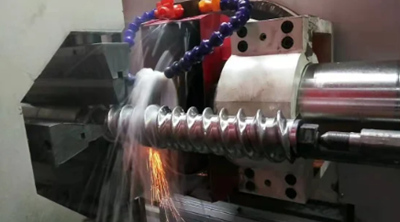
When the moving parts of the grinding machine, such as the table and the grinding wheel holder, move unevenly during micro-cycle feeding or low-speed continuous movement, which is commonly known as creeping. When this phenomenon occurs in the grinder, it makes the feed uneven in the grinding process and affects the roughness of the ground surface of the workpiece.
5. Vibration of grinding machine
Grinding machine vibration in the grinding process, so that the grinding wheel and the workpiece to ask the relative position of the periodic changes that occur on the surface of the workpiece to produce vibration pattern, seriously affecting the processing quality and accuracy.
To improve the accuracy of the workpiece after grinding, in addition to the efforts to eliminate the impact of the above factors, we must also pay attention to the reasonable choice of positioning reference in the process of workpiece processing, clamping methods, grinding wheel selection and correct repair, reasonable choice of grinding dosage and process methods.





.jpg)
